
Sunrise at Angkor Wat
One of the most famous temples in South East Asia, and arguably the world, Angkor Wat is best visited at sunrise. Inspire by the countless photos of the temple silhouetted against glowing skies, we opted to do just that and were not disappointed.
The first few irritable moments of waking were quickly replaced with excitement as we stumbled into a taxi. The usually lively streets were quiet except for others making the same pre-dawn journey. The uneven surface of the bridge over Angkor Wat’s moat was the first challenge, especially as a ticketing official had just shone a torch directly in our faces. We hadn’t thought to bring a torch. As we ventured further into the enclosures of the temple however, our eyes grew more accustomed to the darkness and we started to walk more confidently.
Waiting for sunrise at Angkor Wat
The main path (again, and not surprisingly, an uneven surface) leads from the west towards the centre of the complex, which is built utterly symmetrically and makes Angkor Wat a great example of architectural balance. We passed one of two libraries, left the main entry path and crossed grass to meet a small crowd forming at the edge of a pool of water in the pre-dawn darkness, at what was clearly the sunrise viewing spot. Small local children swarmed offering postcard sets, Angkor guidebooks, scarves and elephant trousers, at the best prices we saw locally.
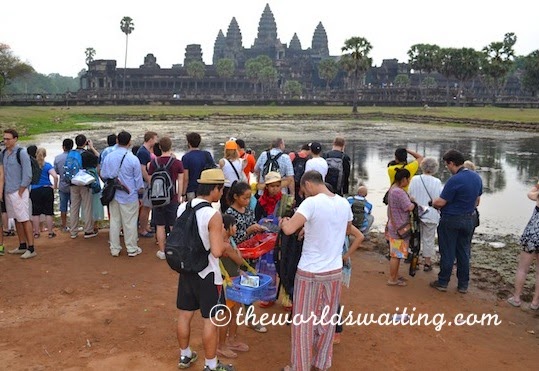
We stood before South East Asia’s most famous temple, transfixed and watched as the colours of the sky grew lighter and evolved from indigo darkness through a deep purple to a pinkish violet, silhouetting magically the sanctuary towers of Angkor Wat. Our sunset was not the much-published confronting red that it might have been, but it was still incredible.
Angkor Wat’s remarkable transformation
About 200 photos later (ah the beauty of digital photography!) we entered the inner three of the temples four concentric enclosures. We were met by remarkably well-preserved and enormous bas-relief standing 2 metres high and stretching along hundreds of metres of wall.

These bas-relief carvings depict great battles from Indian mythology and are best understood when you remember Angkor Wat was built as a Hindu temple in the early 12th century by King Suryavarman II. It was dedicated to Hindu god Vishnu but is so fascinating because it has since undergone a remarkable transformation and today is one of the most significant Buddhist temples in Cambodia. Glances at the bottom of pillars show carvings of Hindu figures that have been adjusted to now represent Buddha.
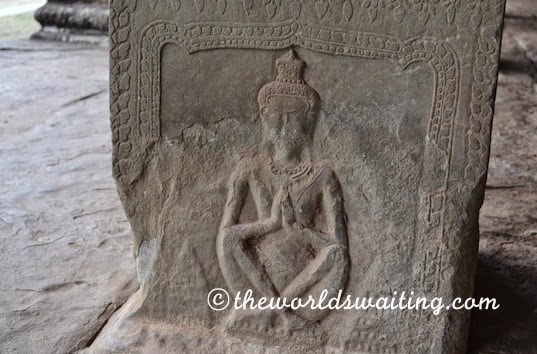
Inside the second enclosure we found ourselves in what felt like a grassed courtyard area that surrounded the inner sanctuary, and most sacred part of the temple. The area was peaceful despite all the visitors. We walked around to the eastern side of the temple and exited the complex, looking back on the temple bathed in the early morning sunshine.
The sacred Sanctuary Tower
We re-entered, climbed another staircase and entered the inner centre of Angkor Wat. At this point we took a seat to admire the stonework up-close as we had to wait for the inner sanctuary to open to the public. Being an important centre of worship it is accessible only to worshippers very early in the morning. The area grew busy with restless tourists and when declared open the crowd gathered and headed up the steepest and most frightening staircase we had ever seen. At the top everyone had rust-orange-coloured left palms from clinging tightly onto the railing on their ascent. At this height amidst the surrounding and mostly flat landscape it felt like we had entered another world, high above the one we knew. In a square formation corridors with dancing apsaras carved into the walls led between courtyards open to the sky above.
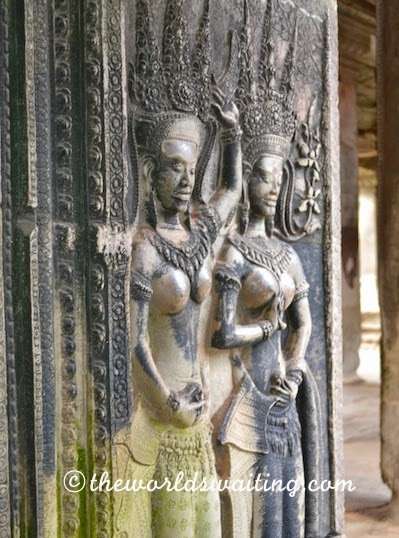
Where the structure used to be more open, walls have been built to provide enclosed locations for statues of Buddha. This area is considered the most sacred and it is important to dress appropriately to be respectful during your visit.
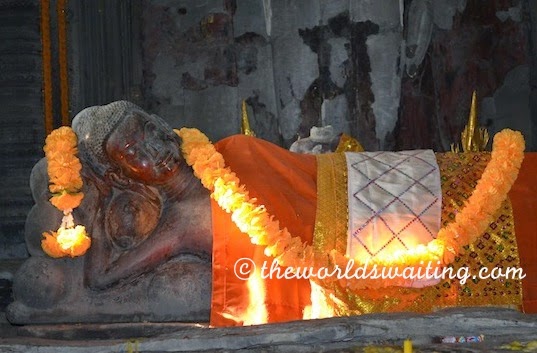
The alarming descent from the top of Angkor Wat
Upon leaving the inner sanctuary tower we had to face that staircase again, but this time descend it. We put our cameras and any other lose items in our bags to have both hands free just in case of incident and stepped carefully down praying nobody above and behind us slipped.

As we emerged we came across a courtyard containing several Buddha and Naga figures carved from stone. Some were complete, others missed limbs and some, rather tragically, were missing their heads.
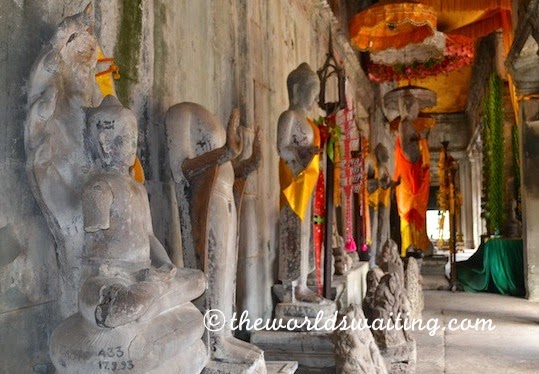
We retraced our steps heading west out of the temple complex and were met by several groups of orange-robed Buddhist monks arriving to visit the temple. At first we were surprised at the number of them photographing the temple with cameras and even iPhones, but were told some monasteries are not as strict about possessions as they are thought to be.
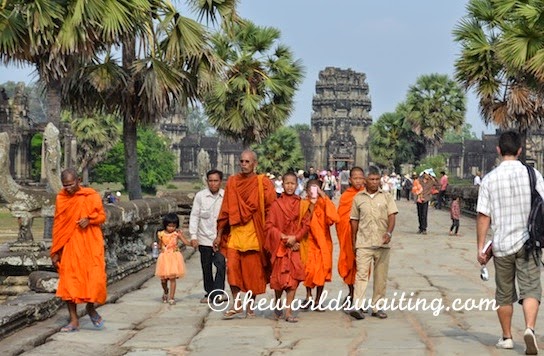
It was magical to visit Angkor Wat so early in the morning and witness sunrise over this incredible temple. The timing also meant exploring was less hot and sticky than later in the day. Being a mountain temple, Angkor Wat features many, many staircases as well as uneven surfaces though. If you go for the sunrise I’d definitely recommend wearing reliable shoes and taking a torch!
Have you visited Angkor Wat? Which part of the complex did you enjoy most?
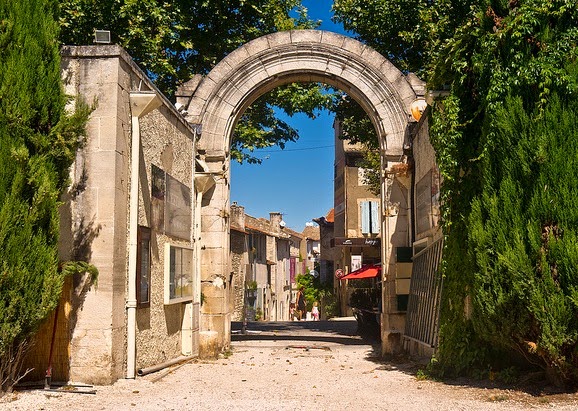
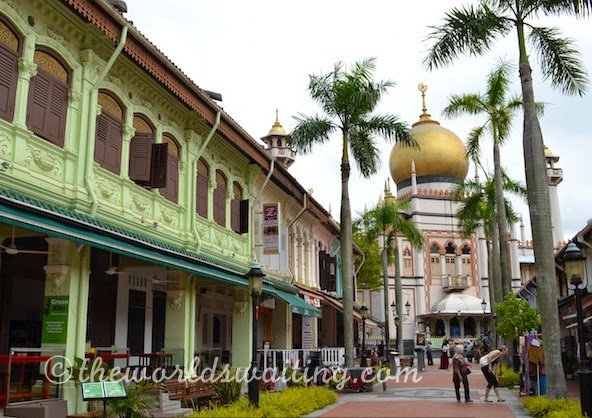


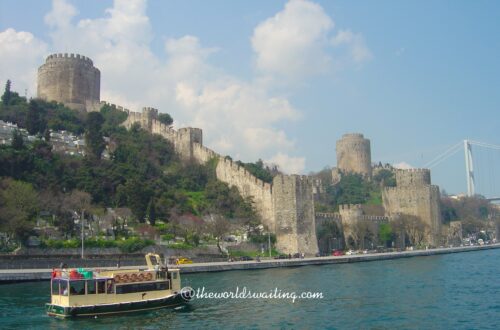
One Comment
Becky Padmore
Beautiful! I hope to go this year!